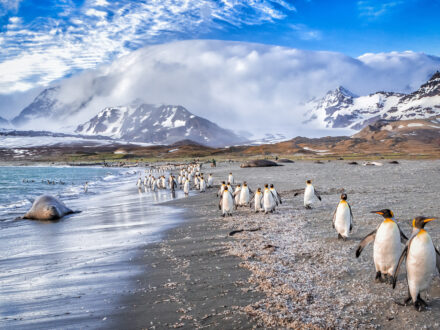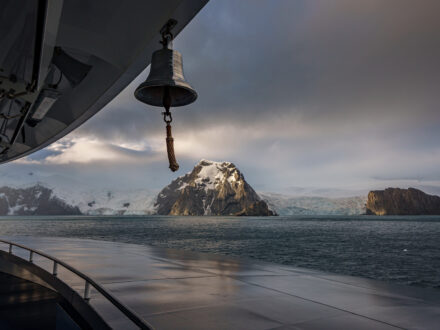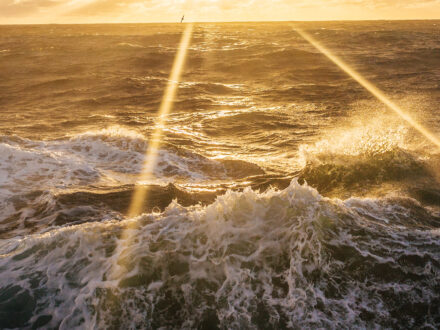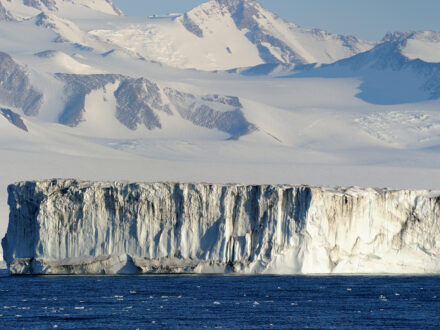Modes Of Travel & Transportation In Antarctica
Given we’re talking about the coldest, driest, windiest, and most remote continent in the world, getting around Antarctica is a different proposition than just about anyplace else. As more and more tourists are discovering, however, it’s remarkably easy to see the White Continent in all its glory—and possible to do so in a single trip by sea, land, and air, resulting in a truly multi-dimensional exploration of one of the planet’s most beautiful places.
Antarctica transportation ranges from zippy snowmobiles and Zodiac boats to hulking jets, cruise ships, and long tractor trains. How do people travel in Antarctica, the most extreme landmass on Earth? Let’s find out!
How Do You Get Around In Antarctica?
Antarctica’s seasonal population of researchers and support staff uses a variety of modes of transport in this uniquely demanding environment. Seagoing vessels must be fortified against ice floes and continuous packs. Overland vehicles contend with raw snowcover—sculpted by the wind over extensive areas into rugged mini-ridges called sastrugi—and glacial ice ridden with dangerous crevasses. Aircraft face strong polar winds, severe temperatures, and the vagaries of landing on ice and snow.
Fortunately, recreational visitors to Antarctica have it quite easy, relying on tried-and-true transportation methods in safe and well-supported sightseeing areas.
In the following simplified summary, we’ll sketch out the basics of how both tourists and researchers get around down here—and point you to more detailed guides we have on some of these individual modes of transport in Antarctica.
By Sea
Many working polar vessels hauling cargo and personnel to and from Antarctica’s research stations and transport hubs are at least ice-strengthened, designed with reinforced steel and other features to withstand contact with ice floes and thinner layers of continuous ice. Some cruise and expedition ships are also ice-strengthened.
The most robust polar vessels are icebreakers, designed to force their way through thicker sheets of sea ice. Cargo ships may accompany icebreakers that lead the way to service Antarctic stations.
Traveling by ship is the most popular means of visiting Antarctica. Ushuaia, Argentina is the number-one port for a cruise around Antarctica, though travelers on the other side of the world might opt for Hobart, Australia (Tasmania) or Invercargill, New Zealand. Tourist vessels range from huge and upscale cruise ships to smaller, more nimble expedition ships. Zodiacs offer landfalling opportunities and up-close viewing of marine life.
Many cruises give you the option to get on the water in even more intimate fashion via kayaks or stand-up paddleboards.
Majestic Antarctica
By Air
Besides the popular flightpath between Punta Arenas, Chile and King George Island—favored by some travelers to Antarctica who wish to skip the shipborne journey across the Drake Passage between Tierra del Fuego and the South Shetlands—aircraft provide transport and sightseeing options for tourists on the White Continent.
These range from scenic daylong overflights out of various Southern Hemisphere airfields and fly-in services to the South Pole and luxury camps on the Antarctic Polar Plateau to sightseeing helicopter rides over remote jewels such as the McMurdo Dry Valleys. Those staying in the upscale East Antarctic accommodations offered by the company White Desert can land at the remarkable Wolf’s Fang Runway—Antarctica’s only private jet runway—backdropped by the toothy peaks of the Kurze Mountains.
Numerous other primitive runways—both on the snow and ice of the continent and on fringing ice shelves and sea ice—as well as helicopter pads provide air transport services for research and other personnel and cargo in Antarctica.
Big transport jets make intercontinental flights into and out of research stations: The U.S. Antarctic Program (USAP), for example, uses C-17s between Christchurch, New Zealand and McMurdo Station, while the Australian Antarctic Program (AAP) flies between Hobart and the Wilkins Aerodrome runway near Casey Station with C-17s as well as the Airbus A319-115 LR.
Smaller, ski-equipped fixed-wing aircraft such as Twin Otters and LC-130s as well as helicopters can be used for ferrying between stations and resupplying seasonal field camps.
Blue-ice runways (which include the private Wolf’s Fang facility) are especially favored in Antarctica, as wheeled aircraft—which can transport heavier loads than their ski-equipped counterparts—can land at them.
One way or return?
By Land (and Ice)
Tourists can actually set foot on the Continent—as well as the ice shelves and pack ice overlying its coastal waters—in a wide variety of ways. Whether on cruise-based tours or as part of getaway packages in the interior, you can go hiking, snowshoeing, cross-country skiing, snowmobiling—heck, even fat-biking! Whether spyballing penguins and seals on a guided beach walkabout on the Antarctic Peninsula or skiing to the South Pole in the spirit of long-ago explorers, these are unforgettable terrestrial adventures.
Professionals in Antarctica employ a wide variety of vehicles to get around research stations, field camps, and in between. These range from snowmobiles (skidoos) and plow-rigged four-wheelers to tracked Sno-Cats and tractors hauling long sled trains of supplies, personnel, and field shelters.
There aren’t any paved roads on Antarctica, needless to say, and the above vehicles need to be able to navigate ever-shifting snow and ice. But there are ice roads: most notably the South Pole Traverse/McMurdo-South Pole Highway, a roughly 900-mile-long flagged route providing safe passage across the crevasse- and sastrugi-strewn plateau between the USAP’s McMurdo and Amundsen-Scott South Pole stations.
And unpaved service roads exist at research stations sited at mostly snow-free Antarctic oases. On bare gravel or hard-packed snow, even passenger cars have been used at such places: honest-to-goodness Volkswagen Beetles, famously, in the case of Australia’s Mawson Station.
The most tangible
Historical Transport in Antarctica
It’s still remarkable to look back on the early days of Antarctic exploration, sealing, and whaling and consider the primitive means of getting-around that were employed in such an unforgiving, impossibly remote realm.
Wooden sailing ships such as used by Captain James Cook to reach Antarctic pack ice in 1774 or by Ernest Shackleton and his crew on their fateful 1912 expedition aboard Endurance were much more vulnerable in polar waters than today’s ice-strengthened and ice-breaking steel crafts. (Endurance, of course, ended up trapped and then crushed by pack ice, ultimately sinking to the bottom of the Weddell Sea.)
In the Heroic Age of Antarctic Exploration, novel and innovative motorized sledges were developed—a pioneering concept that proved to be the forerunner for the first tanks used in France in WWI—but these quickly succumbed to the frigid conditions, and so expeditions typically traveled with sleds pulled by dogs, ponies, or good old-fashioned manpower. Besides enduring tremendous hardship and exertion in the fierce Antarctic climate, the sled-dogs and ponies risked ending up on the menu in the survival situations that sometimes befell early explorers (as on Robert Falcon Scott’s Terra Nova voyage).
Aircraft have been used in Antarctica since the 1920s, and have been enormously consequential in their ability not only to transport large loads of passengers and cargo, but also to map vast, otherwise inaccessible areas of the White Continent on flyovers. (And aviation history here at the bottom of the world is still being made: In November 2021, an Airbus A340 out of Cape Town landed at the Wolf’s Fang Runway—the first time a wide-body passenger airliner of its kind had touched down on the White Continent.)
The Magic of Antarctica & South Pole Transport
Whether you’re gazing at the Antarctic Peninsula’s looming mountains from the deck of a cruise ship, speeding through icebergs on a Zodiac, skiing through a vast polar snowscape, or looking at the most pristine terra firma on Earth from a helicopter window, any way you see Antarctica is worth the effort!
Disclaimer
Our travel guides are for informational purposes only. While we aim to provide accurate and up-to-date information, Antarctica Cruises makes no representations as to the accuracy or completeness of any information in our guides or found by following any link on this site.
Antarctica Cruises cannot and will not accept responsibility for any omissions or inaccuracies, or for any consequences arising therefrom, including any losses, injuries, or damages resulting from the display or use of this information.















































